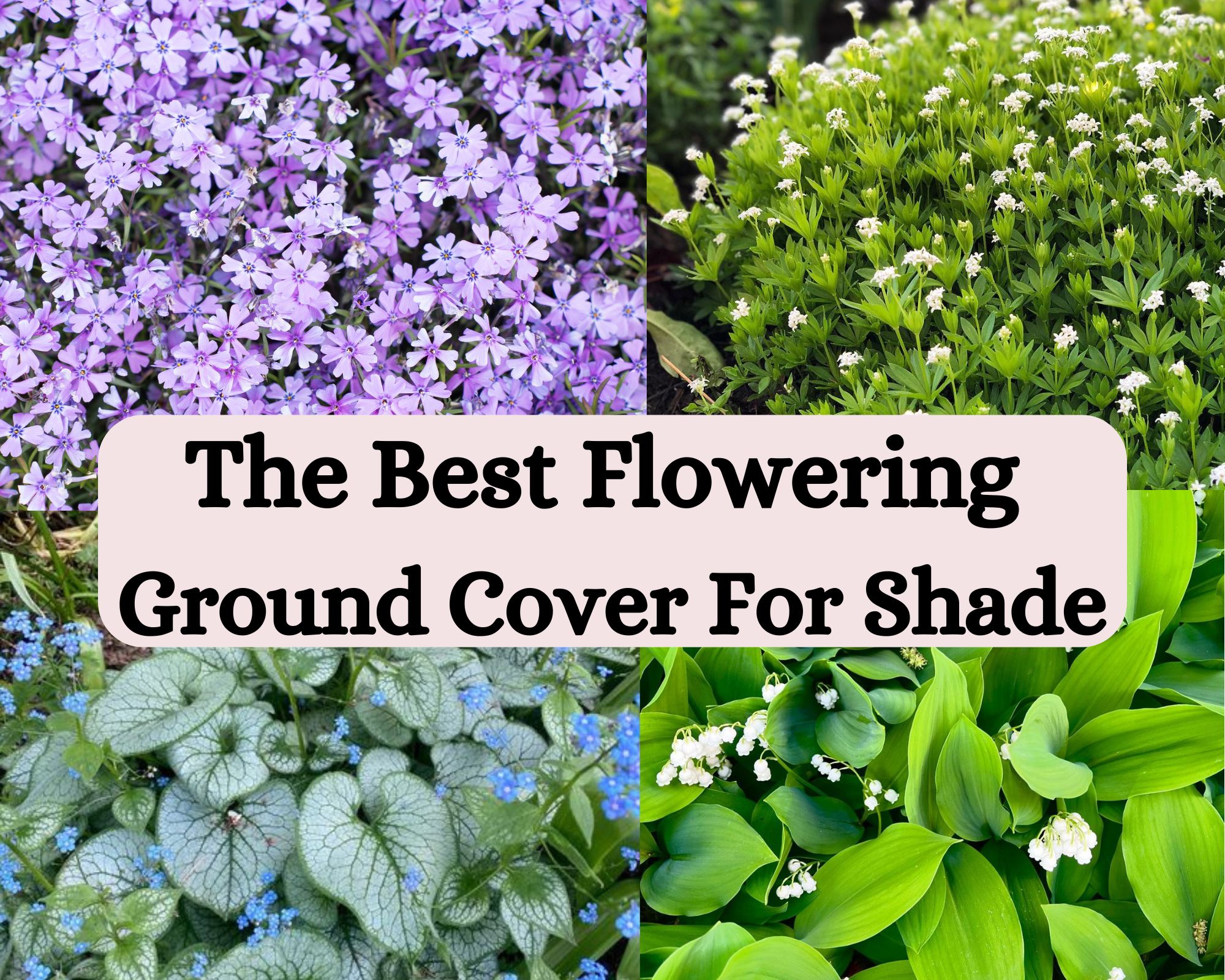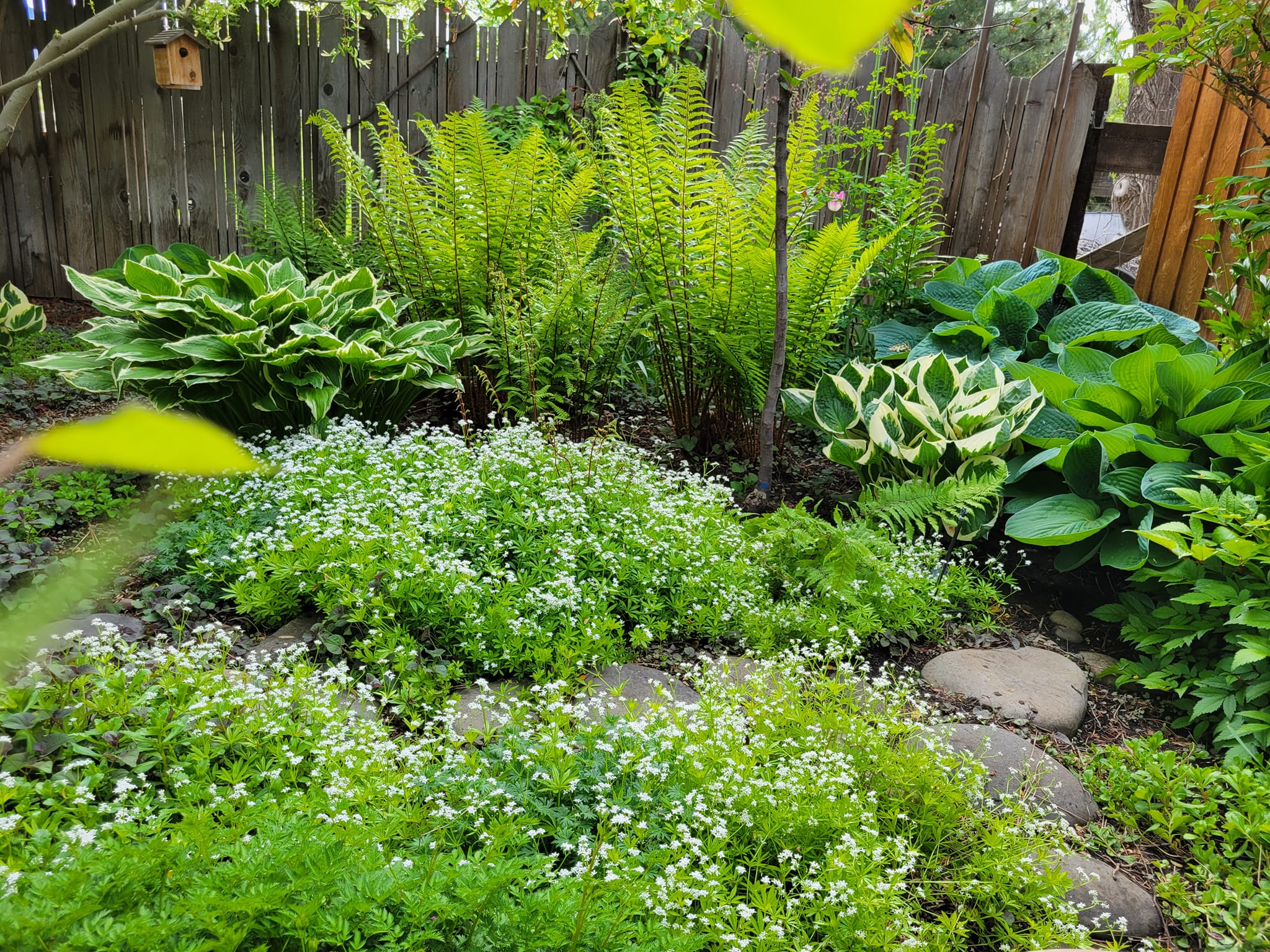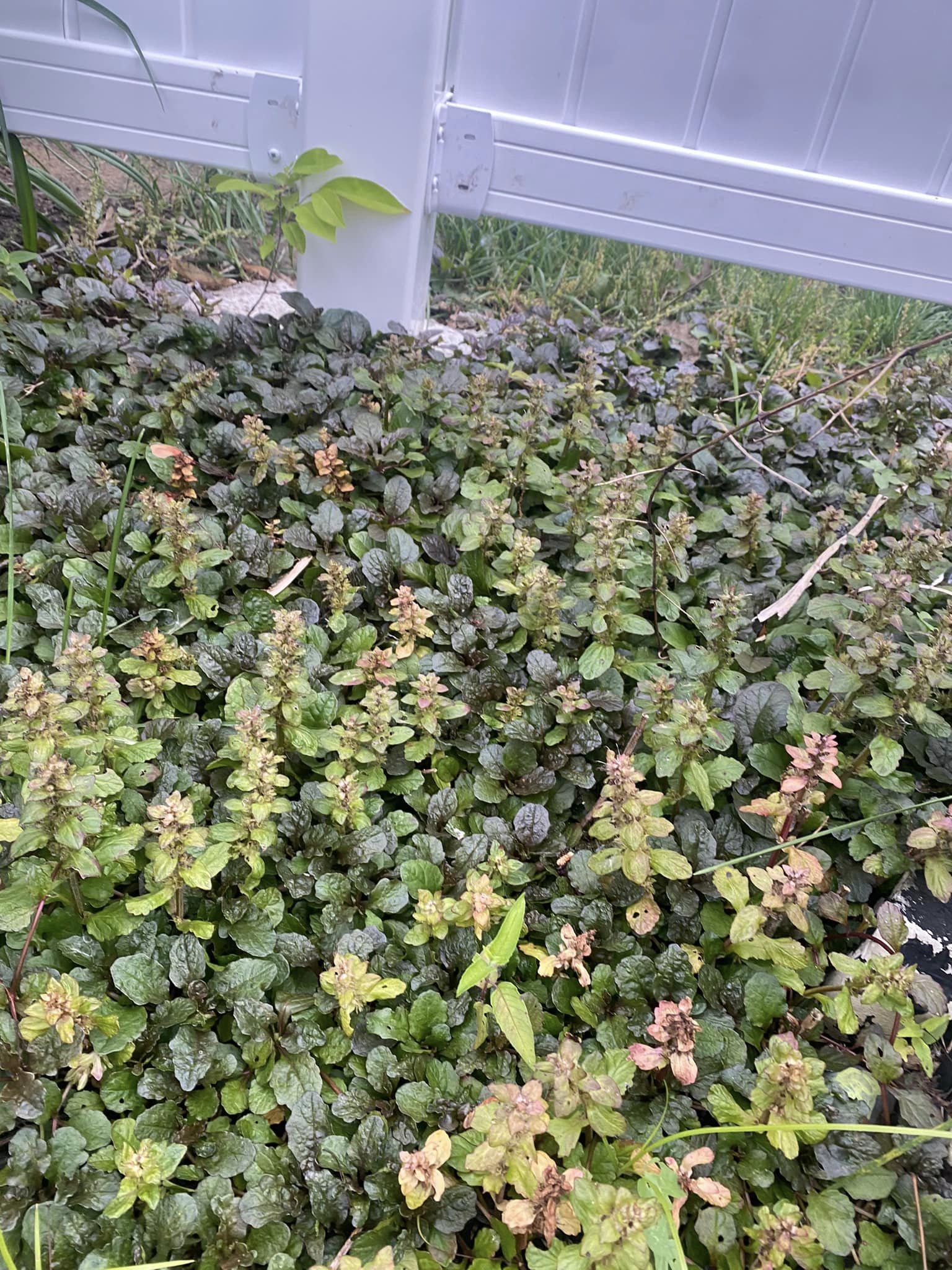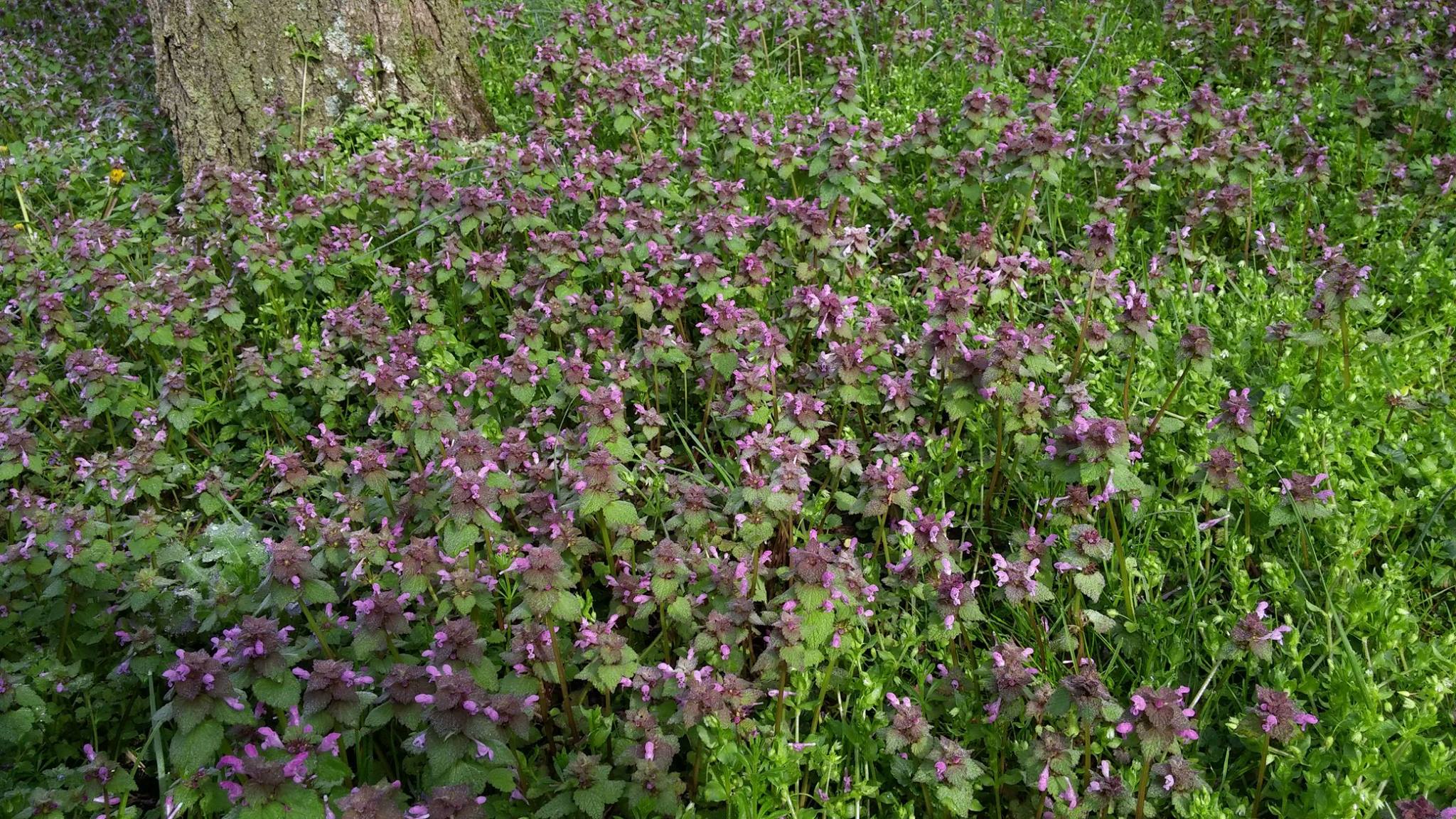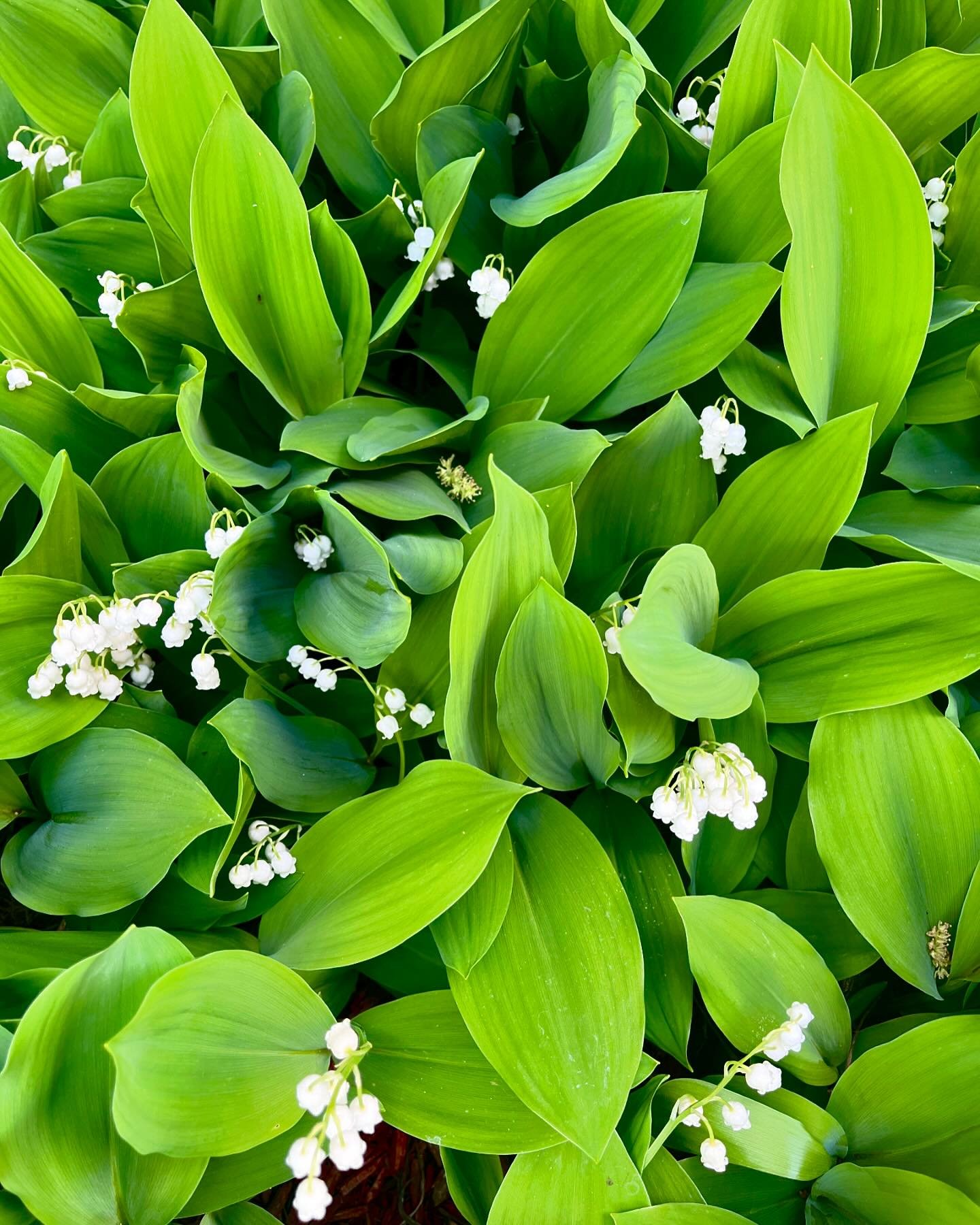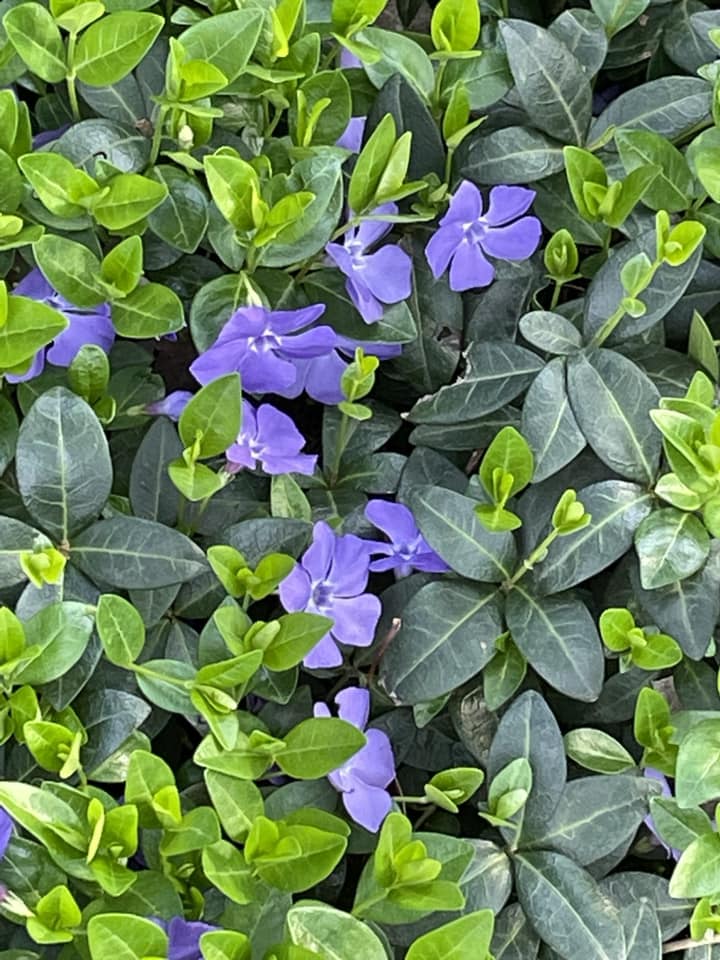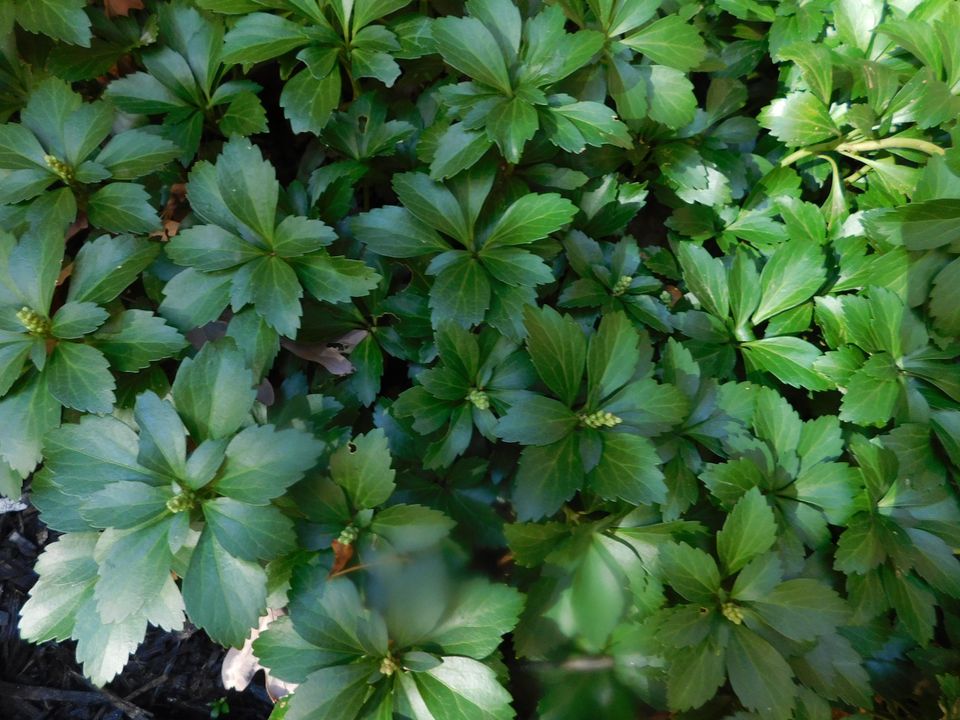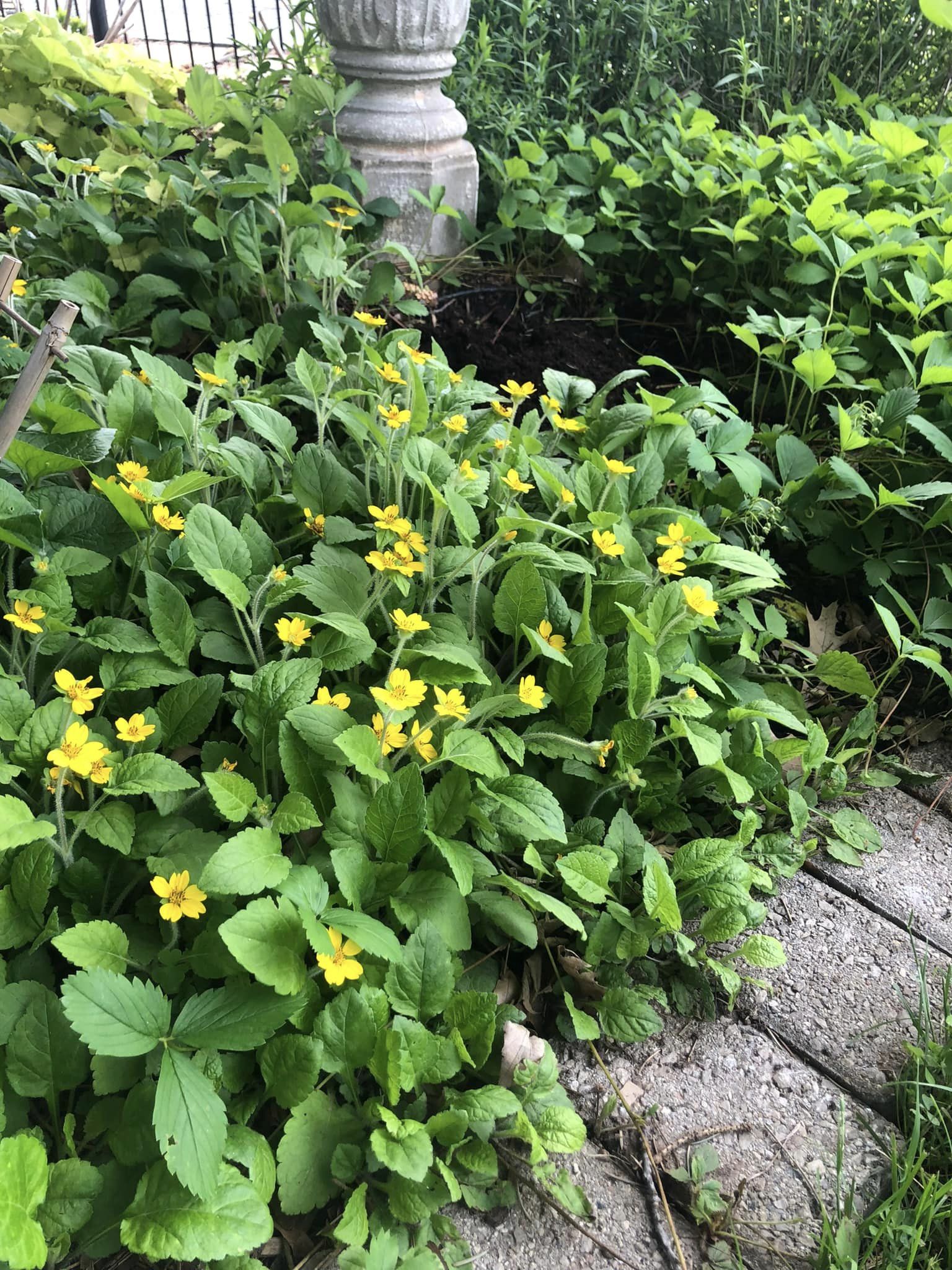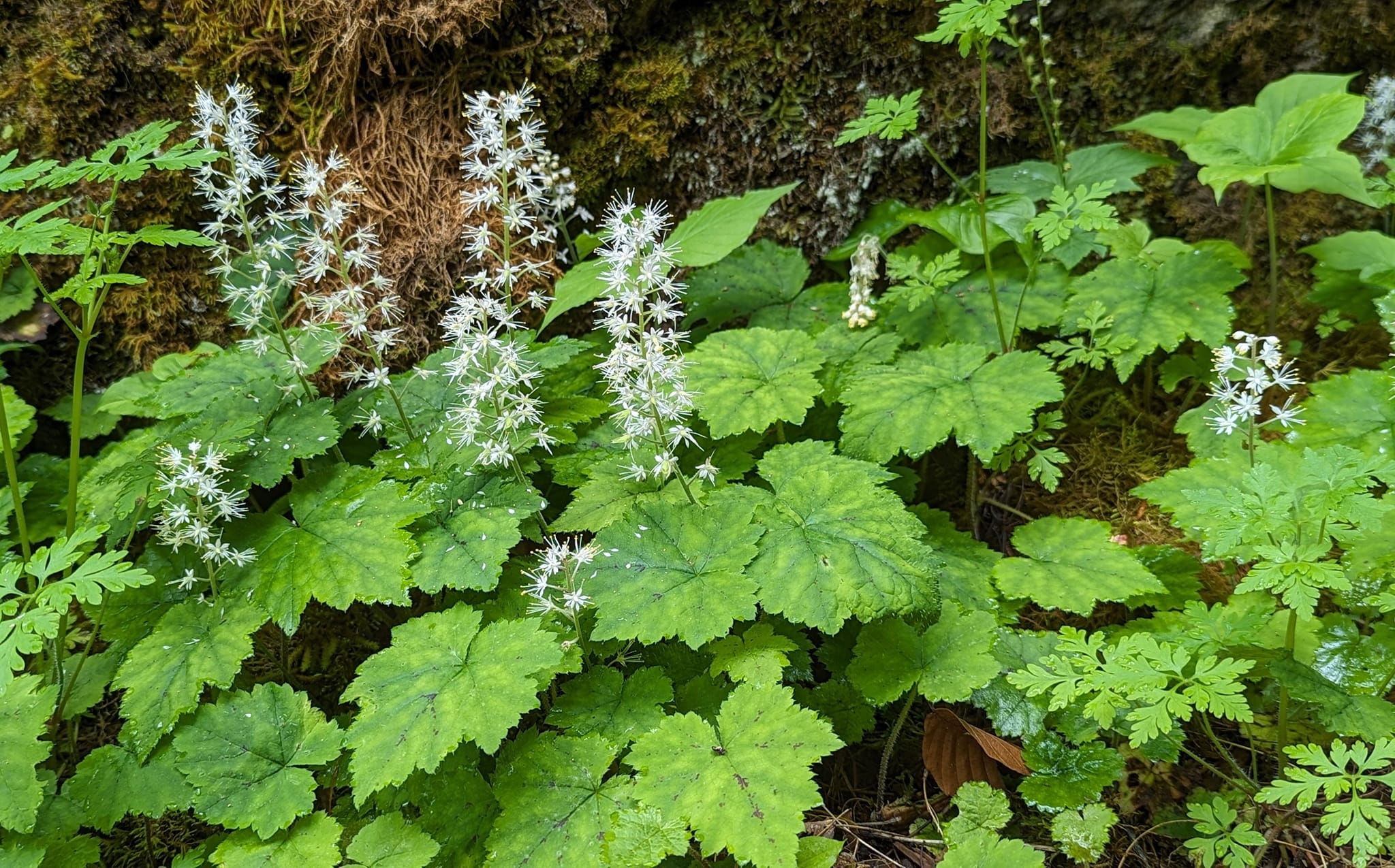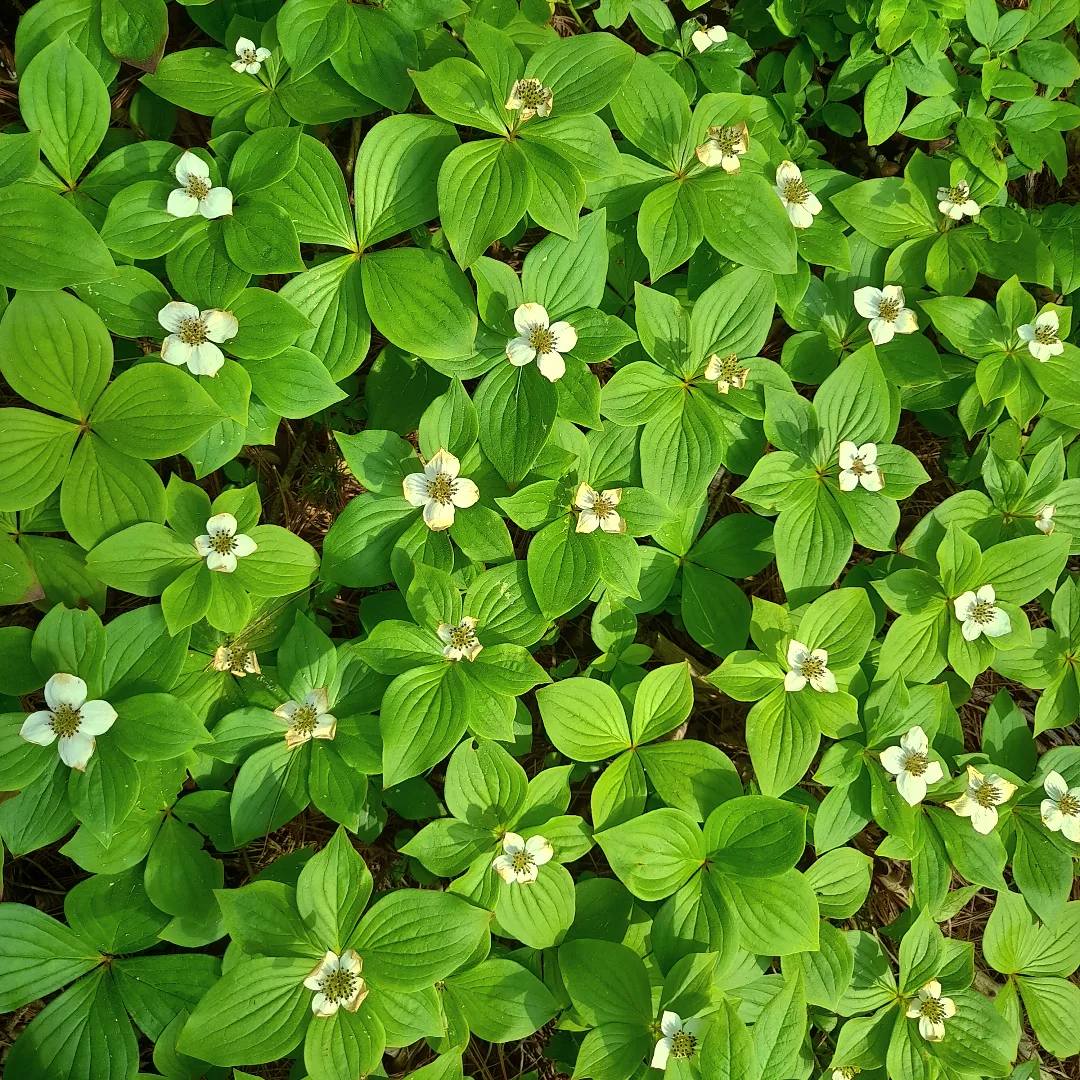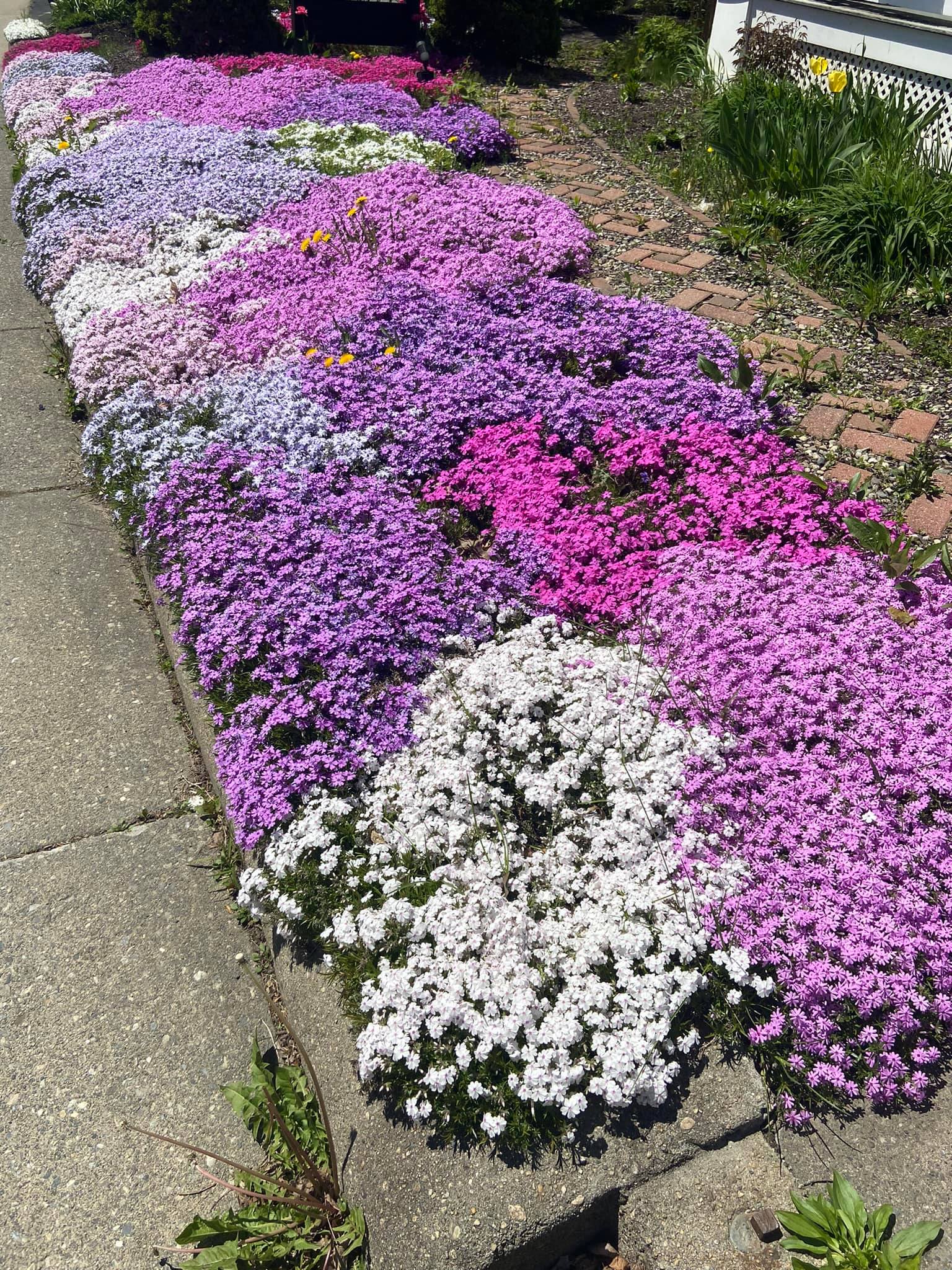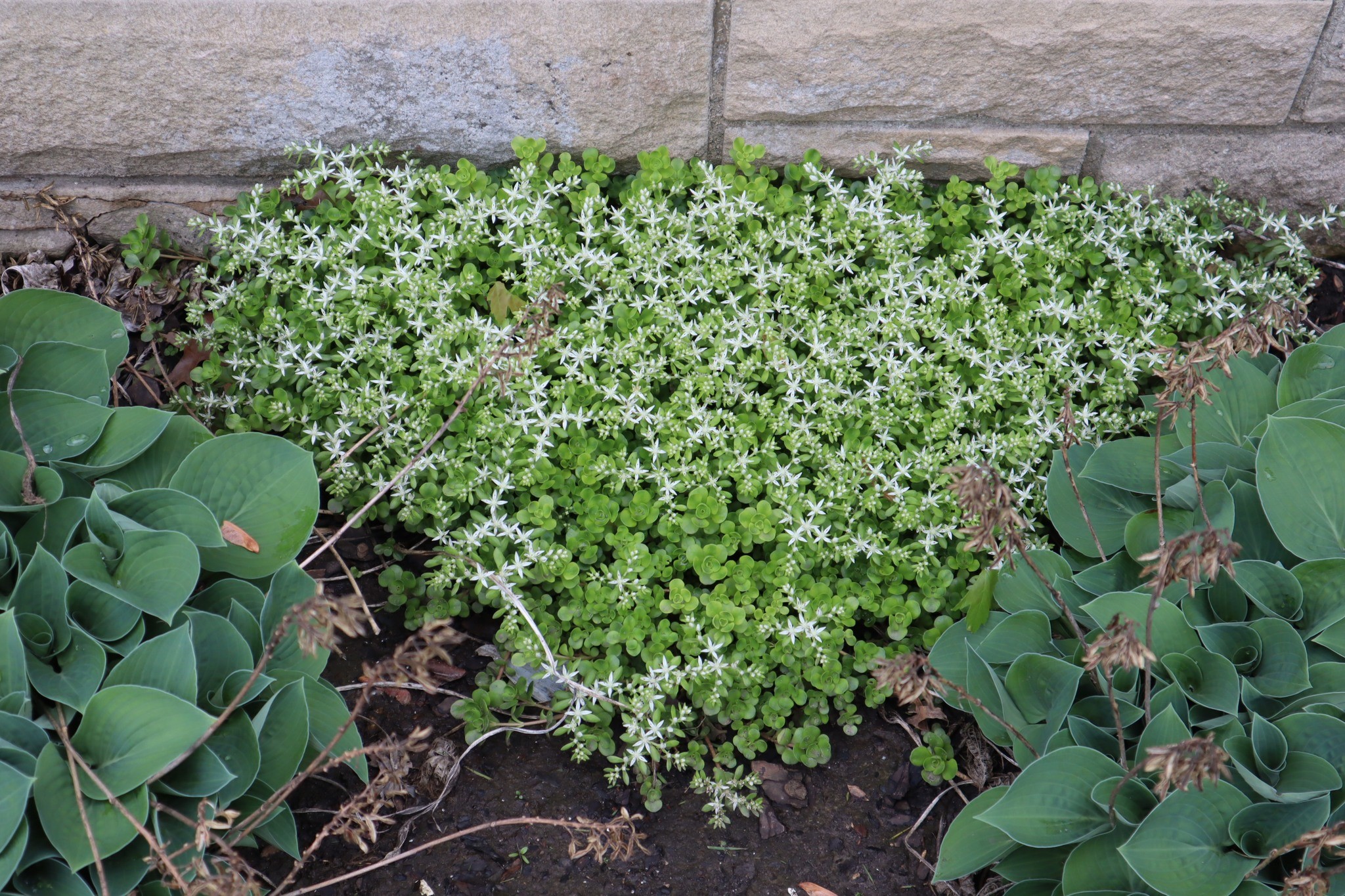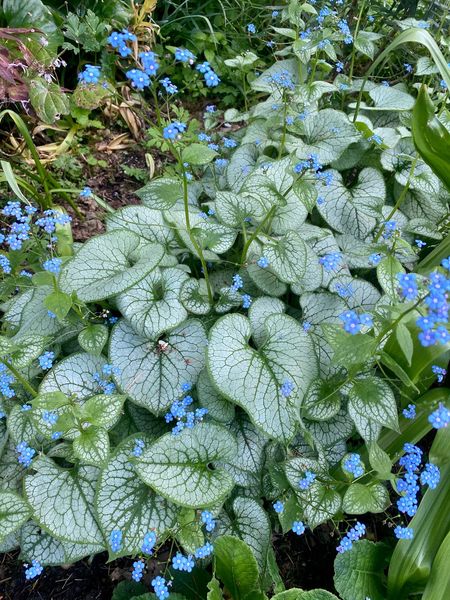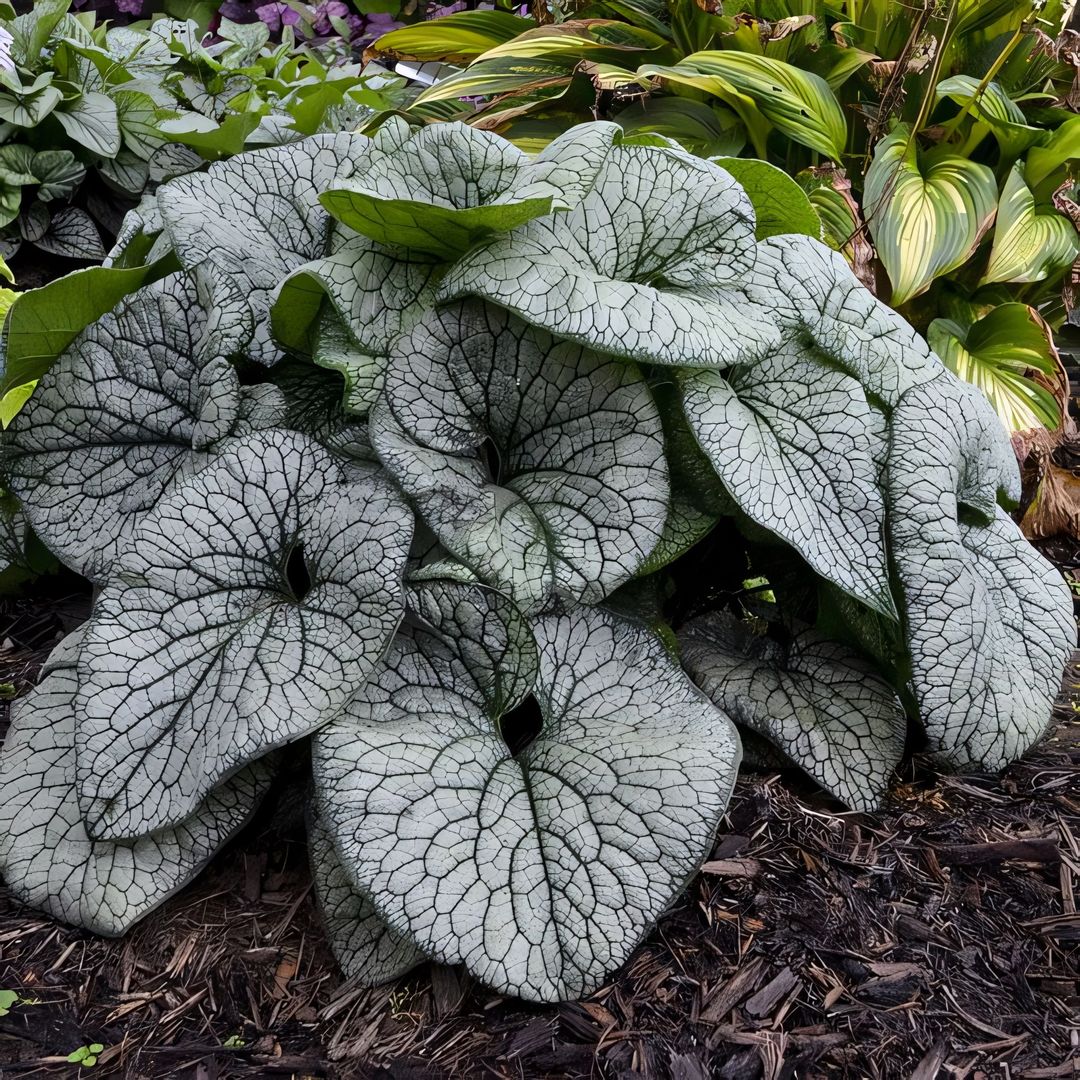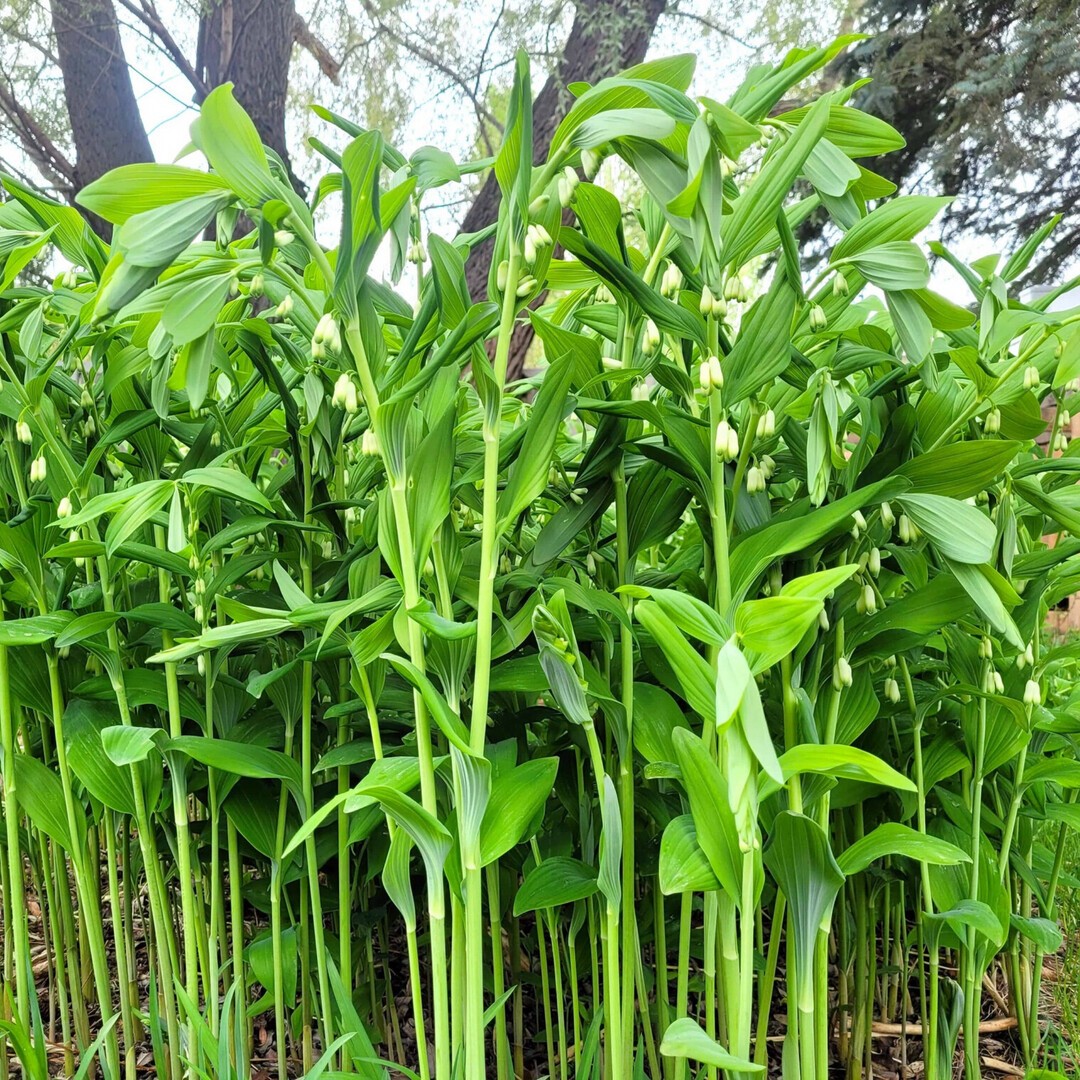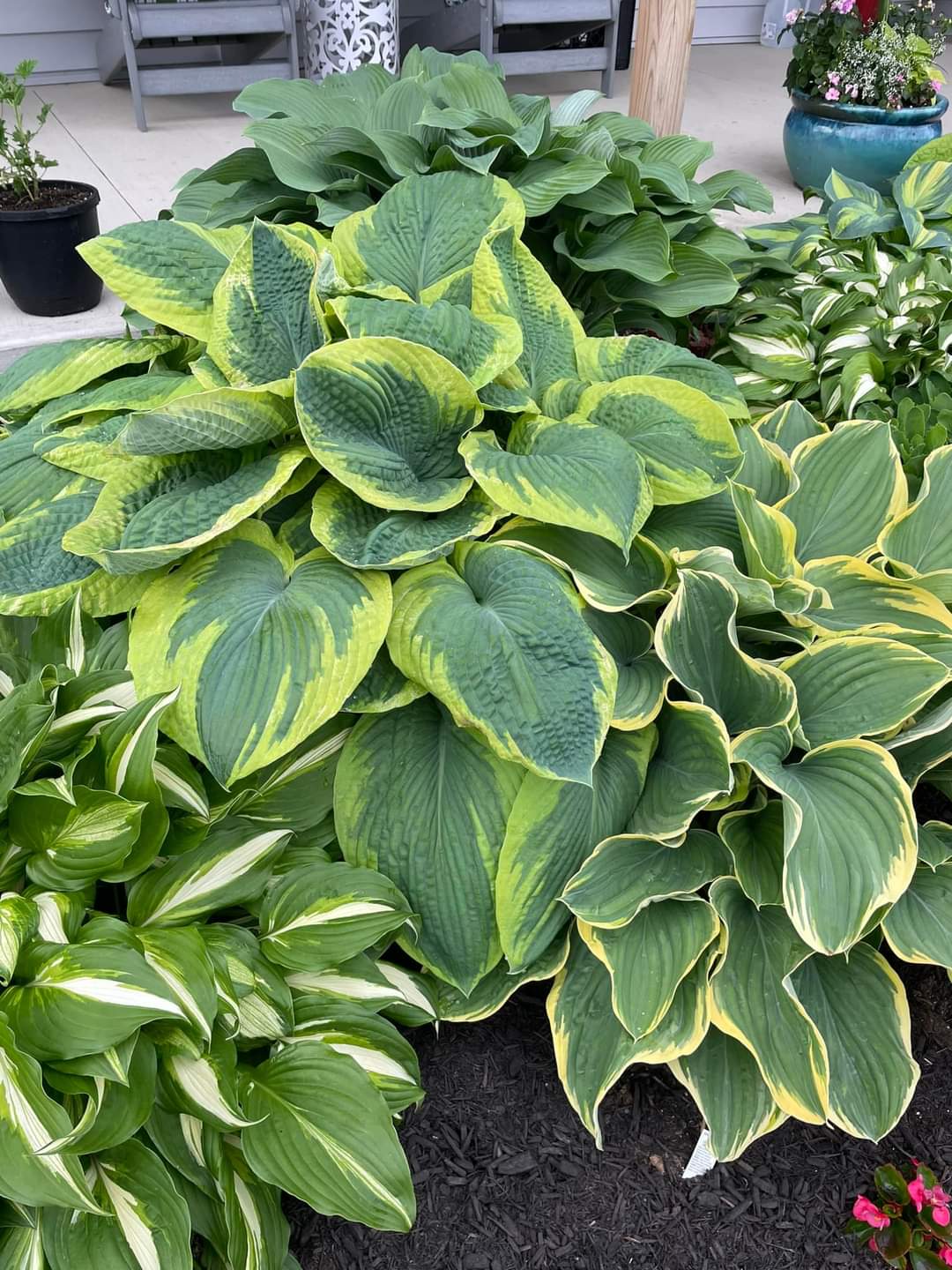Finding the right ground cover for sun-soaked spots is pretty easy, as there are numerous plant species that thrive in full sun. However, the same isn’t true for the shaded parts of your garden or yard. Vibrant, colorful plant options suitable for shaded locations often seem limited.
But this doesn’t mean these spaces must be devoid of color and life. So, what’s the solution? Flowering ground covers for shade. These plants provide a lush, beautiful carpet of foliage and blooms even in the shadiest corners of your garden or yard.
This post explores 15 shade-loving ground covers that will do well in your garden or yard.
15 Flowering Ground Covers For Shade
Here’s a list of 15 flowering ground covers for your shaded parts of your yard or garden.
1. Sweet Woodruff (Galium odoratum)
Even the deepest shade doesn’t faze the Sweet woodruff. Therefore, consider it for your north-facing garden beds or the ground beneath trees or shrubs. Water your sweet woodruff regularly for the best performance, especially during the establishment period.
Accommodate its spreading habit by planting it 12 to 18 inches apart. Sweet Woodruff’s dense mat of bright green leaves and clusters of delicate white flowers create a visually pleasing ground cover that brightens shaded areas. This plant will also attract pollinators into your garden, giving the space more life.
Hardiness zones: 4-8
2. Ajuga (Ajuga reptans)
This versatile, attractive ground cover is well-suited for a garden’s shaded areas because it thrives in partial to full shade, though it can tolerate some sunlight. This flowering plant’s colorful foliage and striking flower spikes will give your garden’s shaded spots year-round interest and vibrancy.
Moreover, the dense, attractive ground cover it forms by spreading will further elevate your garden aesthetics. Use Ajuga as ground cover for areas under trees, pathways, and shaded garden beds. You can also use it to fill gaps between rocks and stones.
Hardiness zones: 3-10
3. Dead Nettle (Lamium maculatum)
Add a splash of color and year-round interest to your garden’s darkest corners with Dead Nettle’s green, silver, or white, heart-shaped, variegated leaves and small pink, purple, or white flower clusters. This perennial spreads outwards gradually but stays below a foot tall.
Read More: Creeping Charlie Look Alikes (With Pictures)
Due to Dead Nettle’s somewhat fragile stems, plant it in areas with minimal foot traffic. While this plant can tolerate some sunlight, particularly in cooler climates, it prefers shady spots where its foliage color remains vibrant and its growth is lush.
Hardiness zones: 3-8
4. Lily of the Valley (Convallaria majalis)
It is a timeless classic perfect for your garden’s shaded areas. Its broad green leaves and delicate, fragrant white flowers create a pleasing ground cover. Moreover, its sweet, intoxicating scent is delightful.
You can enjoy Lily of the Valley outdoors and indoors as a cut flower. The classic Lily of the Valley boasts white flowers, but you can choose a different cultivar for color and form variation. For instance, Rosea features soft pink flowers, while ‘Fortin’s Giant’ produces larger flowers and taller stems.
Hardiness zones: 3-8
5. Common Periwinkle (vinca minor)
Common Periwinkle is hardy, versatile, and excels in shaded areas. Its glossy evergreen leaves and star-like blue-violet flowers provide year-round interest, while its spreading habit helps suppress weeds and control soil erosion.
This plant’s spread extends 1-2 feet and reaches up to 6 inches high, forming a dense, attractive ground cover. Consider growing Common Periwinkle in the slopes and embankments to prevent erosion. This plant has different cultivars, offering unique foliage colors and flower variations.
Notable examples include Bowles’s Variety, Alba, Atropurpurea, and Illumination.
Hardiness zones: 4-9
6. Japanese Spurge (Pachysandra terminalis)
This popular shade-loving plant spreads through underground rhizomes, developing a thick foliage mat. Its glossy, oval, dark green leaves with toothed edges remain attractive throughout the year. In early spring, it produces small, white, slightly fragrant flowers.
While not showy, these flowers contribute to this plant’s aesthetics and attract pollinators. Japanese Spurge can tolerate some morning sun but prefers shaded areas. Ingesting Japanese Spurge is harmful, so handle it with care and plant it out of reach of kids and pets.
Hardiness zones: 4-9
7. Green and Gold (Chrysogonum virginianum)
Also called the Golden Star, this pretty perennial groundcover is prized for its lush foliage and bright, daisy-like flowers. Its deep green foliage forms a dense mat that effectively suppresses weeds and stabilizes soil.
In addition to its robust foliage, Green and Gold produces cheerful yellow flowers from spring through early summer. This plant spreads through rhizomes, covering large areas relatively quickly without becoming invasive.
You can grow this plant in different soil types; just ensure it’s moderately moist and well-drained.
Hardiness zones: 5-9
8. Foamflower (Tiarella cordifolia)
Native to North America’s woodlands, Foamflower is a charming, perennial ground cover is excellent for shaded areas. Consider it for your garden if you seek a beautiful yet easy-to-care-for ground cover. Foamflower’s low-growing habit makes it perfect for woodland gardens, shaded borders, and as an understory plant.
Foamflower prefers partial to full shade and thrives in moist, well-drained soil. This plant features heart-shaped, deeply lobed leaves often marked with dark veining and tiny, star-shaped flowers that appear in airy clusters.
This perennial is hassle-free once established.
Hardiness zones: 3-8
9. Bunchberry (Cornus canadensis)
Pick the shaded parts of your garden where the soil remains consistently moist for Bunchberry. Although this plant can tolerate dappled sunlight, especially in cooler climates, it prefers partial to full shade, particularly in damp woodland environments.
Bunchberry’s distinctive feature is its whorled leaves arranged in clusters of six around the stem. This diminutive perennial plant spreads through underground rhizomes and grows to about 6-8 inches tall. It produces small, creamy white flowers nestled within four large, petal-like bracts in spring to early summer.
Hardiness zones: 2-7
10. Creeping Phlox (Phlox stolonifera)
If an explosion of color is what you are looking for, look no further than the Creeping Phlox. This perennial forms evergreen foliage mats. It will give your outdoor space a lush carpet effect even when not in bloom, thanks to its narrow, needle-like leaves arranged densely along creeping stems.
Read More: Creeping Phlox Lawn: A Low Maintenance Ground Cover
The display is more stunning when it flowers. The profusion of colorful star-shaped blooms completely covers the foliage, creating a spectacular display. Enjoy its unmatched beauty in your rock garden, borders, and pathways.
Hardiness zones: 5-9
11. Woodland Stonecrop (Sedum ternatum)
Also called Wild Stonecrop, this low-growing, perennial succulent is characterized by its fleshy, bright green leaves that form whorls of three around the stem. Woodland Stonecrop can tolerate shade and moisture better than other sedums.
Although Woodland Stonecrop has a relatively short blooming period, its star-shaped, white flowers are quite beautiful and attract various pollinators, including bees and butterflies. This plant flourishes in partial to full shade, thus making it perfect for your garden or yard’s low-lit areas.
Hardiness zones: 3-9
12. Siberian Bugloss (Brunnera macrophylla)
Spreading to about 18-24 inches and growing to 12-18 inches high, the Siberian Bugloss forms a mat that effectively covers the ground in shady areas, helping to suppress weeds and maintain soil moisture. But that’s not all; this plant makes places more aesthetically pleasing.
Siberian Bugloss’ dark green, heart-shaped leaves are particularly attractive and give the plant a distinct look. Moreover, it produces small, delicate, sky-blue flowers in the spring, which resemble forget-me-nots.
This resilient plant suits woodland gardens, borders, and shaded paths.
Hardiness zones: 3-8
13. Heartleaf Brunnera (Brunnera macrophylla)
Heartleaf Brunnera is an absolute beauty that is well-suited for shady conditions. Although the morning sun won’t hurt it, this plant performs best in dappled or full shade, especially in hotter climates where too much sun can scorch the leaves.
This perennial stands out for its large, dark green, heart-shaped, rough-textured leaves with a distinctive silvery sheen or white veining. Besides the striking foliage, Heartleaf Brunnera produces small, bright blue flowers that appear in delicate sprays atop slender stems in the spring.
Hardiness zones: 3-8
14. Solomon’s Seal (Polygonatum spp.)
This graceful, perennial plant suits your landscape’s shady areas. Solomon’s Seal smooth, oval-shaped leaves arranged alternately along the stems create an elegant, layered effect. This plant’s creamy-white to greenish-white sweet flowers hang gracefully from the arching stems’ undersides during its blooming period.
Apart from adding texture, movement, and color to spaces, Solomon’s Seal helps stabilize the soil and prevent erosion. This perennial is not only attractive and functional but also highly adaptable, low maintenance, resilient, and versatile.
Hardiness zones: 3-9
15. Hosta
Hosta stands out for its white, lavender, or pale blue elegant, trumpet-shaped flowers. However, this shade-loving plant’s main appeal lies in its foliage. It has broad, ovate to heart-shaped, glossy or matte leaves in green, blue, yellow, and variegated color shades.
This low-maintenance perennial grows best in partial to full shade. However, some varieties tolerate more sunlight than others. Choose blue-leafed Hostas for your garden or yard’s shaded areas. You can pair Hostas with other shade-loving plants for a harmonious and visually appealing look.
Hardiness zones: 3-9
Final Remarks
Flowering ground covers like those discussed above enhance shaded areas’ visual appeal and functionality. You can plant them under trees, along pathways, on slopes for soil erosion control, or in containers to add greenery and flowers to your shaded patio, deck, or balcony. Pick your shade-loving ground cover based on the qualities you are looking for. For instance, choose Hostas for hardy foliage and creeping phlox for color.

Hey there, I’m Derek Schew, a writer for Lawnholic.com, where we cover everything and anything related to lawns. As someone who’s spent countless hours tending to my own lawn, I’m passionate about sharing my knowledge and helping others achieve the perfect yard. From lawn care tips to product reviews, I’m committed to providing our readers with the most accurate and up-to-date information available. So whether you’re a seasoned lawn enthusiast or just getting started, I invite you to join our community and discover the joys of a lush, green lawn.

